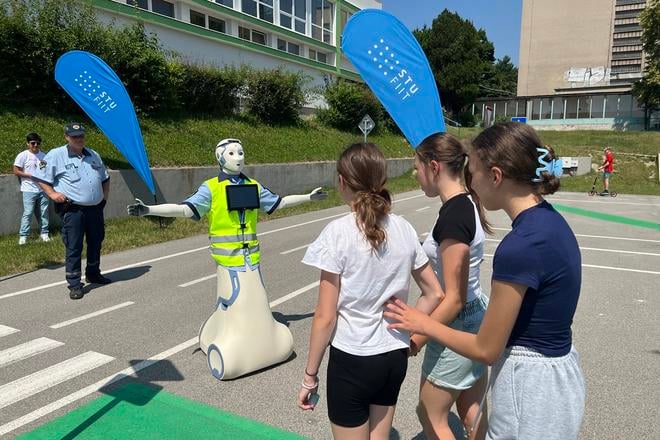A humanoid robot designed to help children cross the road has been tested in Bratislava, in a pilot aimed at exploring how machines could improve safety in cities increasingly shaped by automation.
The test took place last week at a traffic training playground, where pupils encountered the robot under simulated traffic conditions. The project is not just about testing the robot’s technical skills – it also looks at how people, especially children, respond to a humanoid figure helping them in a public space.
“The key question,” said Nina Masaryková, a PhD researcher at the Slovak University of Technology (FIIT STU), “is how people of different ages react to the presence of humanoid robots on the roads.”
The team, working with partners from KIT Karlsruhe in Germany, Halmstad University in Sweden, and the University of Liechtenstein, wants to understand how such robots might support the transition to a world of automated vehicles.
Automation meets real life
Driverless cars are already appearing on roads, and researchers say it is only a matter of time before vehicles can operate fully without human input. That’s where humanoid robots could step in – as intermediaries between people and machines.
Equipped with gestures, voice and facial features, these robots are able to communicate in a natural way with pedestrians, cyclists and drivers. At the same time, they can talk to autonomous vehicles via standard wireless systems. Unlike humans, they can keep a constant 360-degree watch on their surroundings without losing focus.
“At FIIT STU, we don’t see our role just in education and research,” said the faculty’s dean, Ivan Kotuliak. “We want to bring innovation into everyday use.”
Public trust matters too
While robots may help make roads safer, public acceptance of this technology is still an open question.
“That’s why we take an interdisciplinary approach – combining AI, robotics, user experience and social perception,” said Kotuliak.
Researchers collected feedback from pupils of different ages during the Bratislava trial, along with sensor and telemetry data. That information will now be analysed as part of the next phase of the project.


 A humanoid robot helping children cross the road in Bratislava. (source: FIIT STU)
A humanoid robot helping children cross the road in Bratislava. (source: FIIT STU)